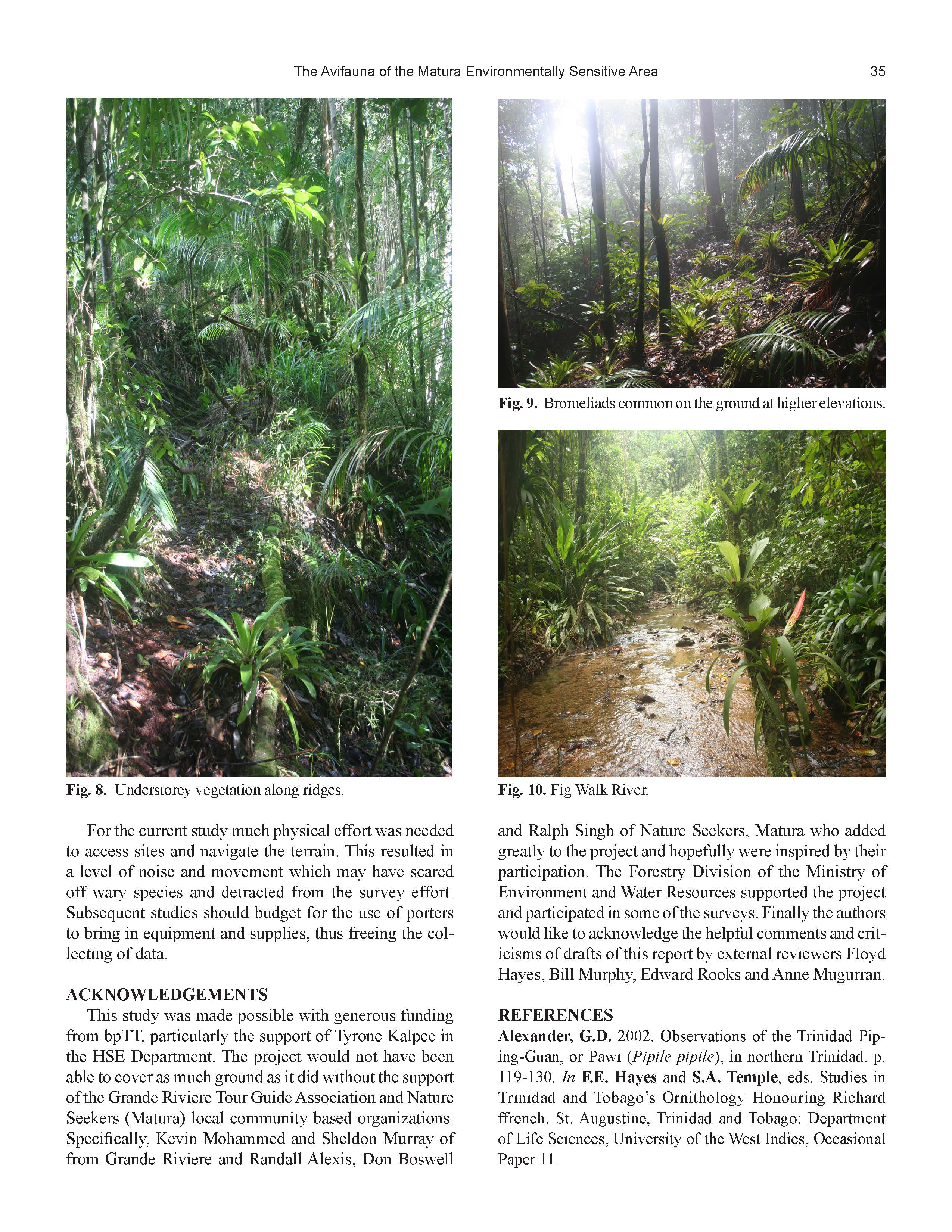The Avifauna of the Matura Environmentally Sensitive Area, Trinidad and Tobago
Keywords:
Matura, ESA, avifauna, endemic, Trinidad, Trinidad-Piping GuanAbstract
A baseline survey of the avifauna of the Matura Environmentally Sensitive Area (MESA) in Trinidad was conducted to characterise the avifauna of the site and establish the presence of species of particular conservation interest. Surveys were conducted over 22 days on nine site visits between 2008 and 2010 from 152 sector (transect) surveys, supplemented by general observation. Overall, 95 species and 1067 individuals were detected, including 89 year-round residents, three non-breeding migrants, and three species which breed locally but disperse post breeding to the mainland. This represents 59% of the species expected in the MESA. The rate of species accumulation suggests that further sampling will yield one additional species per ten sectors. The assemblages observed relect Trinidad's proximity to South America. Both of Trinidad's endemic birds, the Trinidad Motmot, Momotus bahamensis, Trinidad Piping-Guan, Pipile pipile, and the rare Scaled Antpitta, Grallaria guatimalensis, were detected within the study area. High-altitude specialists observed include the Brown Violetear, Colibri delphinae, Speckled Tanager, Tangara guttata, Hepatic Tanager, Piranga flava and Yellow-legged Thrush, Turdus flavipes. The vegetation and altitude along the trail across the MESA on which the survey was conducted is described in sections. The degree of dificulty and potential camping locations of each section are also described to facilitate subsequent surveys.

